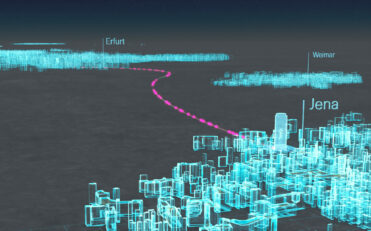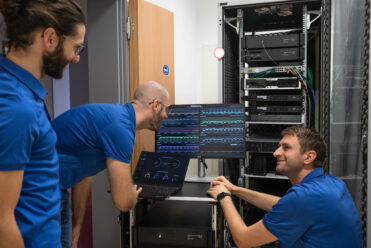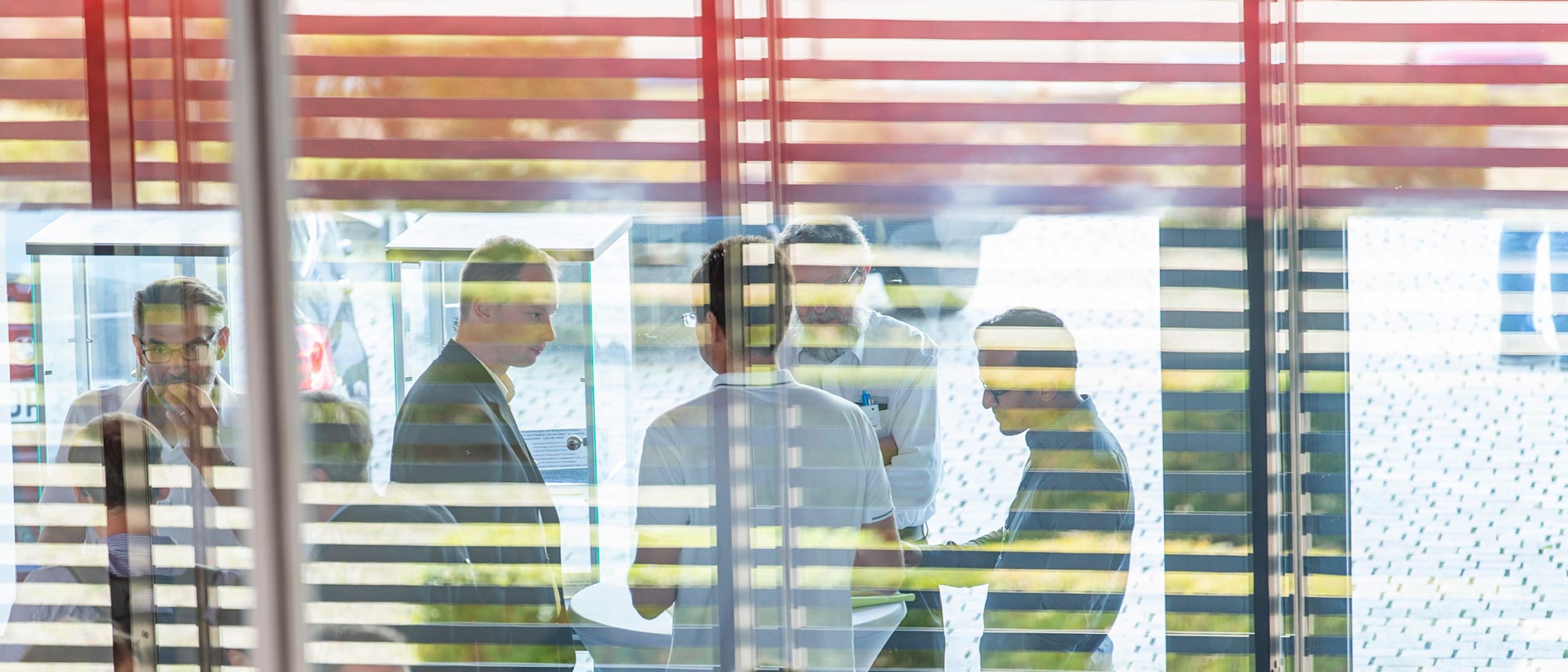News › Fraunhofer IOF · First successful exchange of quantum keys between Erfurt and Jena via optical fiber
The Thuringian Ministry of Science has funded the development of an infrastructure for quantum communication networks in the Free State with eleven million euros. This includes a fiber-based test route between Jena and Erfurt. Now, partners from the Fraunhofer Institute for Applied Optics and Precision Engineering IOF have successfully exchanged quantum keys on the 75-km route for the first time.
It is a milestone for research into high-security quantum communication in Thuringia and Germany: for the first time, quantum keys have been successfully exchanged over a distance of 75 km via optical fiber on a test route between Jena and Erfurt. More than 300,000 quantum keys were sent between the Thuringian cities over a test period of ten days.
The test route, funded by the state, had already been completed in the spring of this year. It connects the Fraunhofer IOF in Jena with the Fraunhofer Center for Microelectronic and Optical Systems for Biomedicine (MEOS) in Erfurt. It has now been successfully put into operation with the latest test runs.
Thuringia to become a quantum hub

Thuringia’s Minister of Economics, Wolfgang Tiefensee, is delighted with the commissioning: »Thuringia is one of the leading locations in the field of quantum communication. As a state, we have been investing specifically in the expansion of these competencies for years. The test track is another important and very concrete step in this direction. It will become the starting point for a secure quantum communications infrastructure throughout Germany. Thuringia, with its research institutions and companies, will form a central hub in this.«
The special added value of the test track is that it takes highly complex quantum key distribution (QKD) technologies out of the laboratory and embeds them in a real, everyday infrastructure. Accordingly, the test track uses conventional optical fiber, for example, as is already used today in IT networks.
and could thus form the basis for the widespread implementation of quantum systems in the future. Also, about 6 km of the test routes run above ground, allowing scenarios of already existing networks to be mimicked.
»For quantum networks of the future, it is important to test novel systems in real infrastructures,« explains Prof. Dr. Andreas Tünnermann, director of Fraunhofer IOF. »In this context, our test track should explicitly be accessible to partners from industry and commerce. As Fraunhofer IOF, we want to be an ›enabler‹ that enables entrepreneurs to test and optimize their own systems for quantum communication in practical everyday scenarios.«
Visualization of the quantum fiber test track between Erfurt and Jena.
First successful quantum key exchange

The first company that has now successfully exchanged quantum keys on the fiber test track with the support of Fraunhofer IOF is Quantum Optics Jena GmbH. In 2020, the young start-up had spun off from the Fraunhofer Institute and has since been developing plug-in solutions for quantum communication. »We are hugely excited about the successful test run,« says Dr. Kevin Füchsel, CEO of Quantum Optics Jena. »But we are also grateful to Fraunhofer IOF for the opportunity to test our system under everyday conditions. In this way, we jointly promote a transfer of science into industry and the practical everyday life of users.«
For the colleagues from Quantum Optics Jena, the first test on the test track immediately yielded exciting results: »We see that the system works differently in the real field than in the laboratory,« Füchsel continues. »In the lab, we transmit at about 300 bits per second with comparable losses. That gives us one encryption key per second. In the field, we’re at about 200 bits, so a little less. A key is 256 bits long and can therefore be renewed almost every second for cryptographic protection, i.e. encryption and decryption, of the transmitted information. It is precisely this fast, tap-proof and automated key renewal that distinguishes quantum key distribution from established methods.«
Quantum Optics Jena is planning a second test run in the near future to further deepen the results obtained from the first test run and to further develop its solutions.
Quantum Optics Jena GmbH during quantum key exchange.
Expansion of the route toward Saxony and Bavaria planned
»So far, our test track offers a two-node connection between Erfurt and Jena,« institute director Tünnermann discusses the current locations. But there are already plans for the future: »We hope to expand our test track even further and establish a network in the direction of Saxony and Bavaria.«
The fiber track was created as part of the Thuringian Ministry of Science’s funding for quantum application laboratories. In addition to the test track, state-of-the-art laboratories for the generation as well as analysis of quantum states and their application in high-security communications were established in Erfurt and Jena. The funding from the state of Thuringia is closely coordinated with federal initiatives. It is also part of the digitalization project of the Thuringian Ministry of Economy, Science and Digital Society.
Quantum key exchange over ever greater distances
Light particles known as quanta are expected to make our communications highly secure in the future. For this to succeed, systems must be created that enable the reliable exchange of so-called quantum keys over various distances.
The Fraunhofer IOF has been researching various possibilities for transmitting highly secure quantum keys for quite some time. As part of the QuNET initiative, a pilot project of the German Federal Ministry of Education and Research, a free-beam link was set up between the Jena public utility company and the Fraunhofer IOF on the Beutenberg Campus in Jena. Here, quantum keys are exchanged over 1.7 km by means of free beams.
The exchange of quantum keys via fibers is now the next step to realize even greater distances. In order to be able to encrypt global communication networks in a quantum-safe manner, an exchange via satellites is also envisaged in the future.
